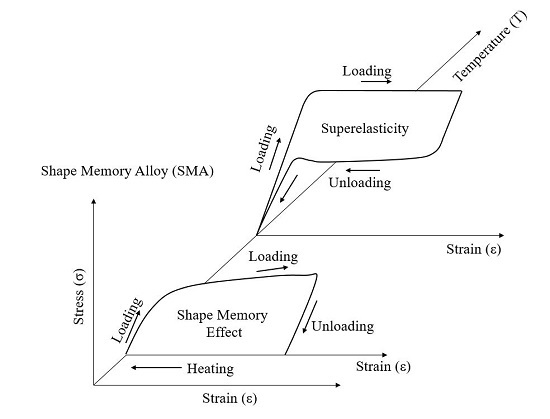Analytical Investigation of the Cyclic Behavior of Smart Recentering T-Stub Components with Superelastic SMA Bolts
Abstract
:1. Introduction
2. Prying Model
3. Model Design
3.1. Specimen Design
3.2. 3D Finite Element Models
4. Analysis Results
4.1. Behavior of T-Stub Components
4.2. Stress Filed Contours
4.3. Recentering Capabilities of Shape Memory Alloy (SMA) Bolts
4.4. Energy Dissipation Capacity of T-Stub Components
5. Concluding Remarks
Acknowledgments
Author Contributions
Conflicts of Interest
References
- Leon, R.T.; Hajjar, J.F.; Gustafson, M.A. Seismic response of composite moment-resisting connections I: Performance. ASCE J. Struct. Eng. 1998, 124, 868–876. [Google Scholar] [CrossRef]
- Green, T.P.; Leon, R.T.; Rassati, G.A. Bidirectional tests on partially restrained, composite beam-column connections. ASCE J. Struct. Eng. 2004, 130, 320–327. [Google Scholar] [CrossRef]
- Hu, J.W.; Kang, Y.S.; Choi, D.H.; Park, T. Seismic design, performance, and behavior of composite-moment frames with steel beam-to-concrete filled tube column connections. KSSC Int. J. Steel Struct. 2010, 10, 177–191. [Google Scholar] [CrossRef]
- Hu, J.W.; Leon, R.T. Analyses and evaluations for composite-moment frames with SMA PR-CFT connections. Nonlinear Dyn. 2011, 65, 433–455. [Google Scholar] [CrossRef]
- Hu, J.W.; Kim, D.; Choi, E. Numerical investigation on the cyclic behavior of smart recentering clip-angle connections with superelastic shape memory alloy fasteners. Proc. Inst. Mech. Eng. Part C J. Mech. Eng. Sci. 2013, 227, 1315–1327. [Google Scholar] [CrossRef]
- Hu, J.W.; Choi, E.; Leon, R.T. Design, analysis, and application of innovative composite PR connections between steel beams and CFT columns. Smart Mater. Struct. 2011, 20, 025019. [Google Scholar] [CrossRef]
- Swanson, J.A.; Leon, R.T. Bolted steel connections: Tests on T-stub components. ASCE J. Struct. Eng. 2000, 126, 50–56. [Google Scholar] [CrossRef]
- Swanson, J.A.; Leon, R.T. Stiffness modeling of bolted T-stub connection components. ASCE J. Struct. Eng. 2001, 127, 498–505. [Google Scholar] [CrossRef]
- Hu, J.W. Seismic Performance Evaluations and Analyses for Composite Moment Frames with Smart SMA PR-CFT Connections. Ph.D. Thesis, Georgia Institute of Technology, Atlanta, GA, USA, April 2008. [Google Scholar]
- Leon, R.T. Seismic Performance of Bolted and Riveted Connections. Background Reports: Metallurgy, Fracture Mechanics, Welding, Moment Connections, and Frame System Behavior; FEMA Publication No. 288; Federal Emergency Management Association (FEMA): Washington, DC, USA, 1997. [Google Scholar]
- Leon, R.T. Analysis and design problems for PR composite frames subjected to seismic loads. Eng. Struct. 1998, 20, 364–371. [Google Scholar] [CrossRef]
- Hu, J.W. Seismic analysis and parametric study of SDOF lead-rubber bearing (LRB) isolation systems with recentering shape memory alloy (SMA) bending bars. J. Mech. Sci. Technol. 2016, 30, 2987–2999. [Google Scholar] [CrossRef]
- Song, G.; Ma, N.; Li, H. Applications of shape memory alloys in civil structures. Eng. Struct. 2006, 28, 1266–1274. [Google Scholar] [CrossRef]
- DesRoches, R.; McCormick, J.; Delemont, M. Cyclic properties of superelastic shape memory alloy wires and bars. ASCE J. Struct. Eng. 2004, 130, 38–46. [Google Scholar] [CrossRef]
- Amin, M.; Ghassemieh, M. Shape memory alloy-based moment connections with superior self-centering properties. Smart Mater. Struct. 2016, 25, 075028. [Google Scholar]
- Yang, G.; Lee, D.H. Method for increasing the energy dissipation capacity of T-stub connections. Int. J. Steel Struct. 2015, 15, 595–603. [Google Scholar] [CrossRef]
- Abolmaali, A.; Treadway, J.; Aswath, P.; Lu, F.K.; McCarthy, E. Hysteresis behavior of T-stub connections with superelastic shape memory fasteners. J. Construct. Steel Res. 2006, 62, 831–838. [Google Scholar] [CrossRef]
- American Institute of Steel Construction (AISC). Manual of Steel Construction: Load and Resistance Factor Design (LRFD), 3rd ed.; American Institute of Steel Construction (AISC): Chicago, IL, USA, 2001. [Google Scholar]
- Kulak, G.L.; Fisher, J.W.; Struik, J.H.A. Guide to Design Criteria for Bolted and Riveted Joint, 2nd ed.; John Wiley & Sons: Hoboken, NJ, USA, 1987. [Google Scholar]
- Abaqus, version 6.12; Standard User’s Manual; Simulia: Pawtucket, RI, USA, 2012.
- Auricchio, F.; Sacco, E. A one-dimensional model for superelastic shape-memory alloys with different properties between martensite and austenite. Int. J. Non-Linear Mech. 1997, 32, 1101–1114. [Google Scholar] [CrossRef]
- Croccolo, D.; De Agostinis, M.; Fini, S.; Olmi, G. Tribological properties of bolts depending on different screw coatings and lubrications: An experimental study. Tribol. Int. 2017, 107, 199–205. [Google Scholar] [CrossRef]
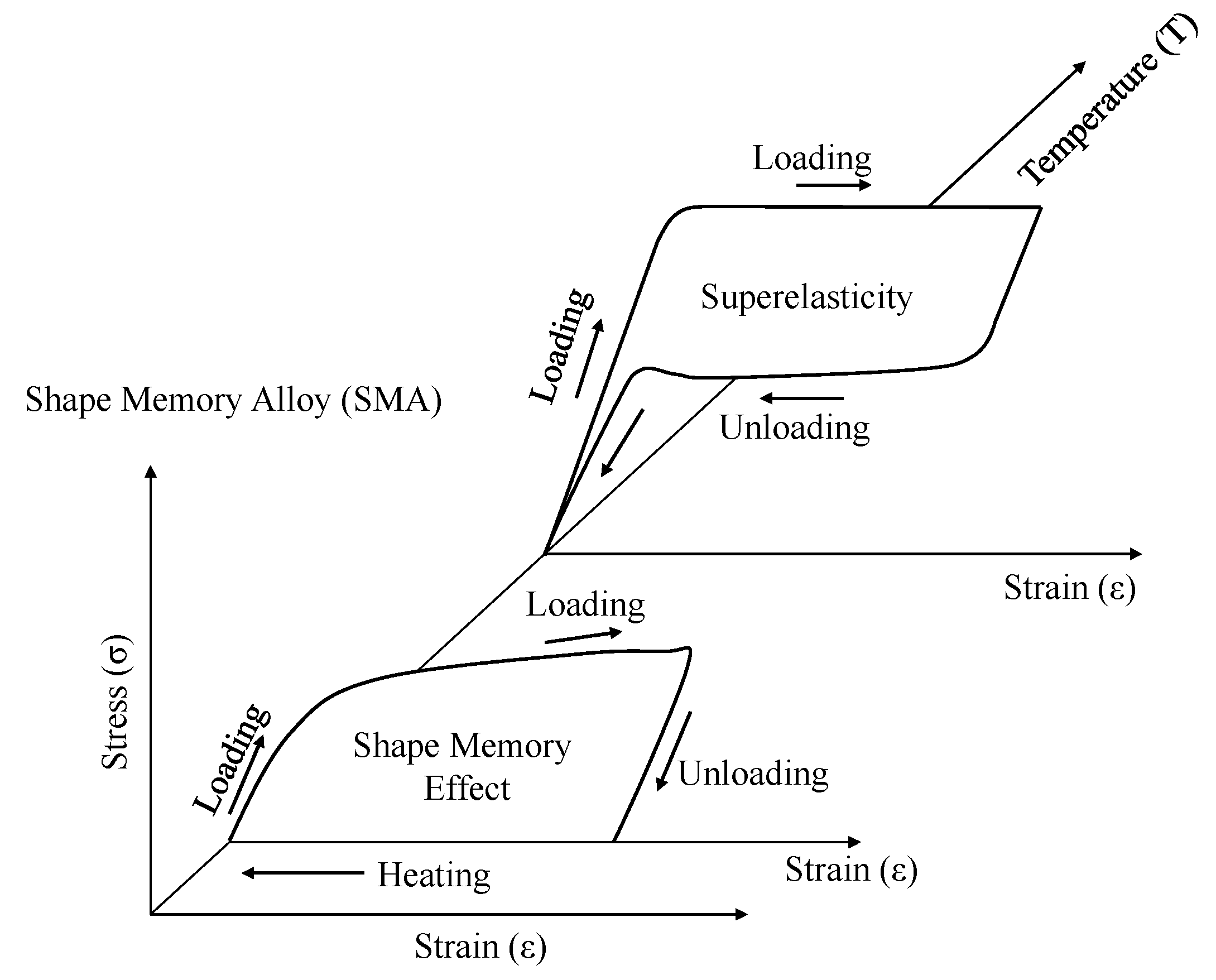

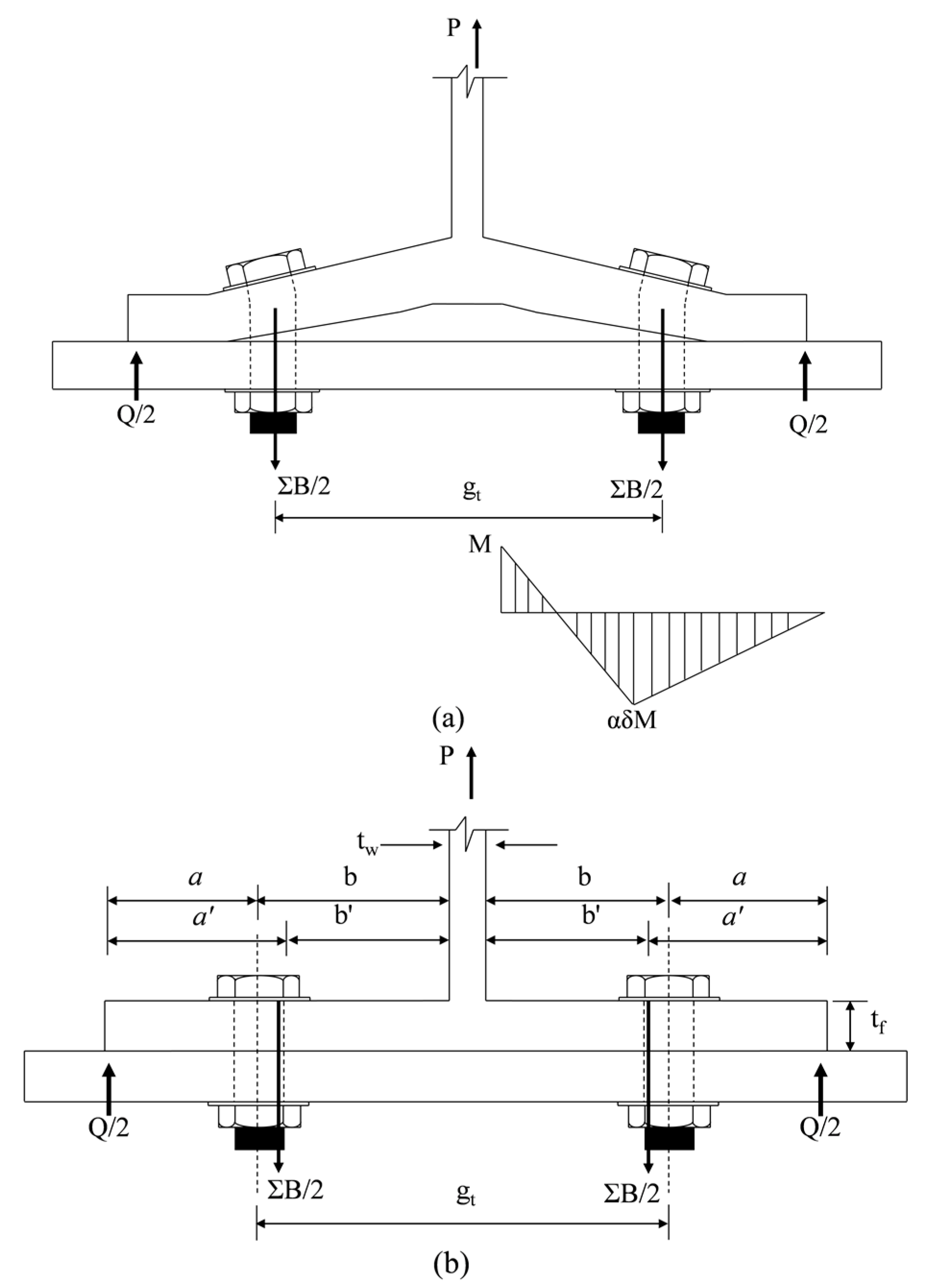
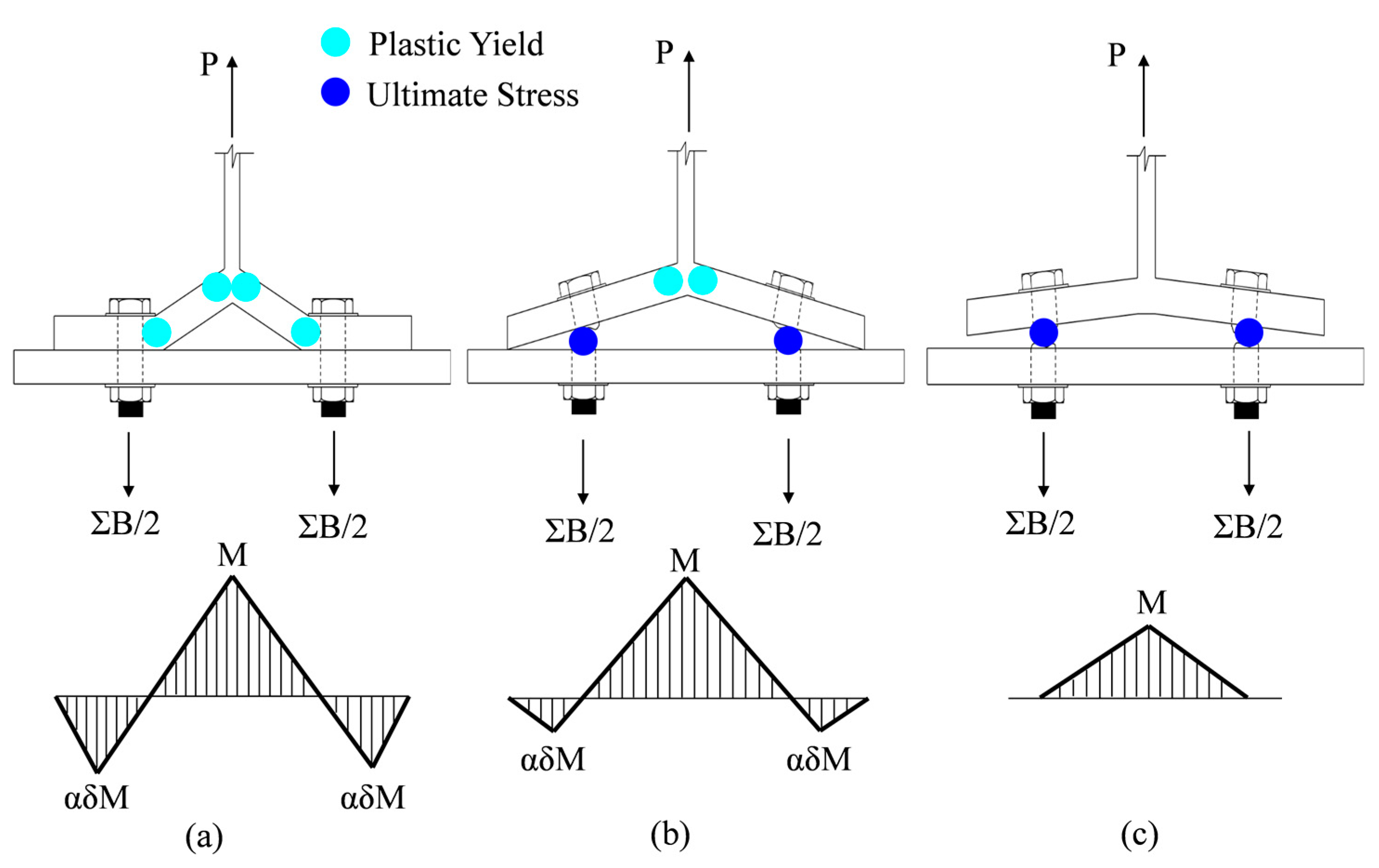
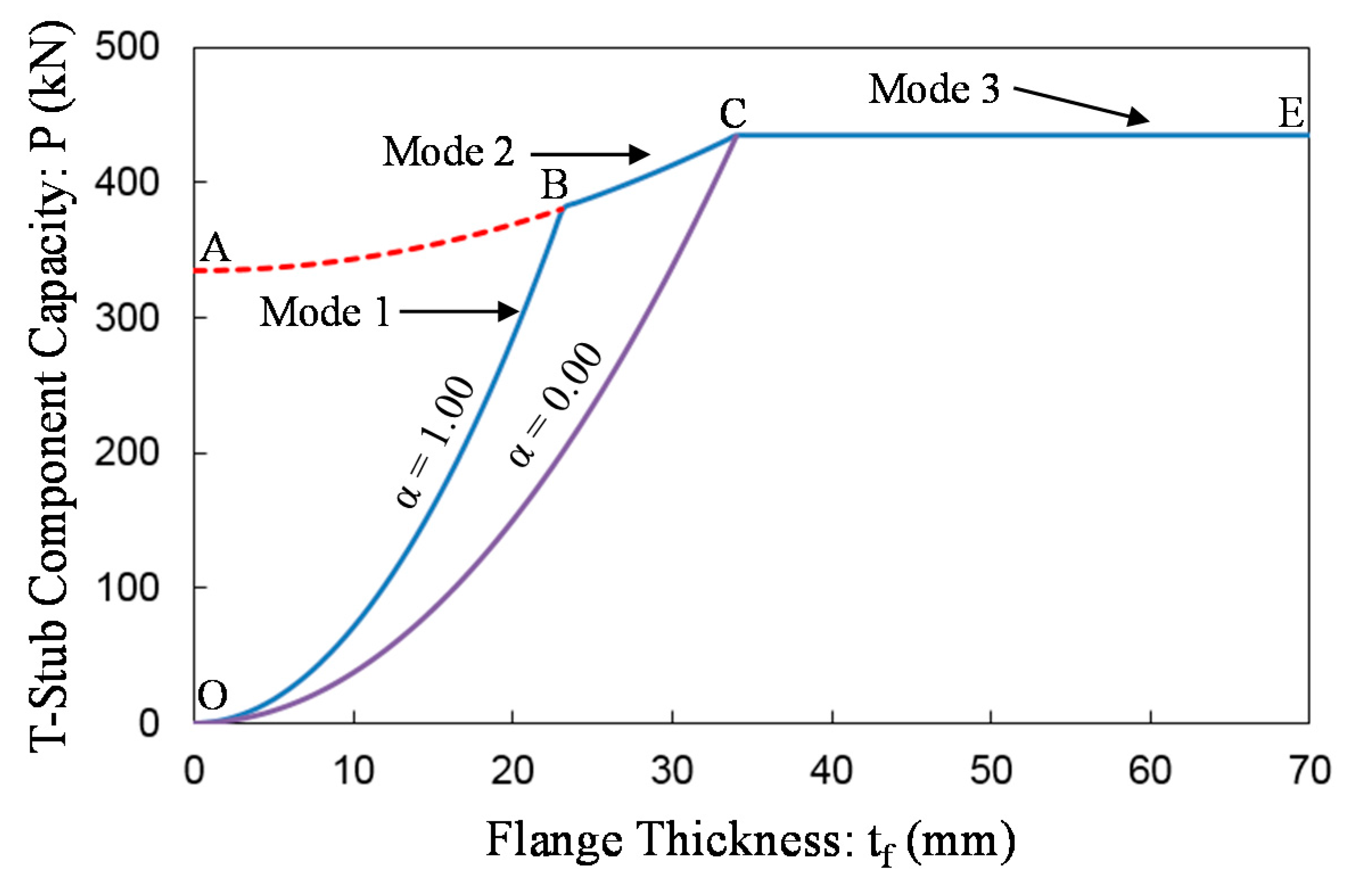

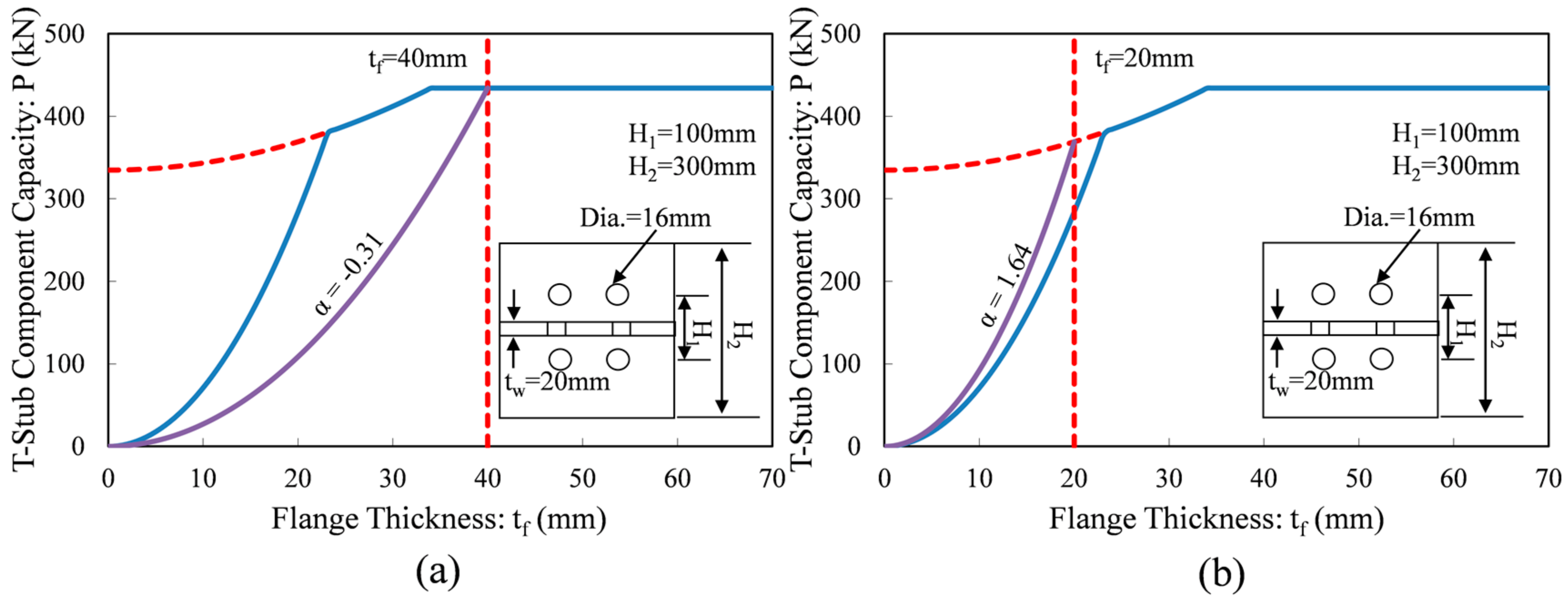
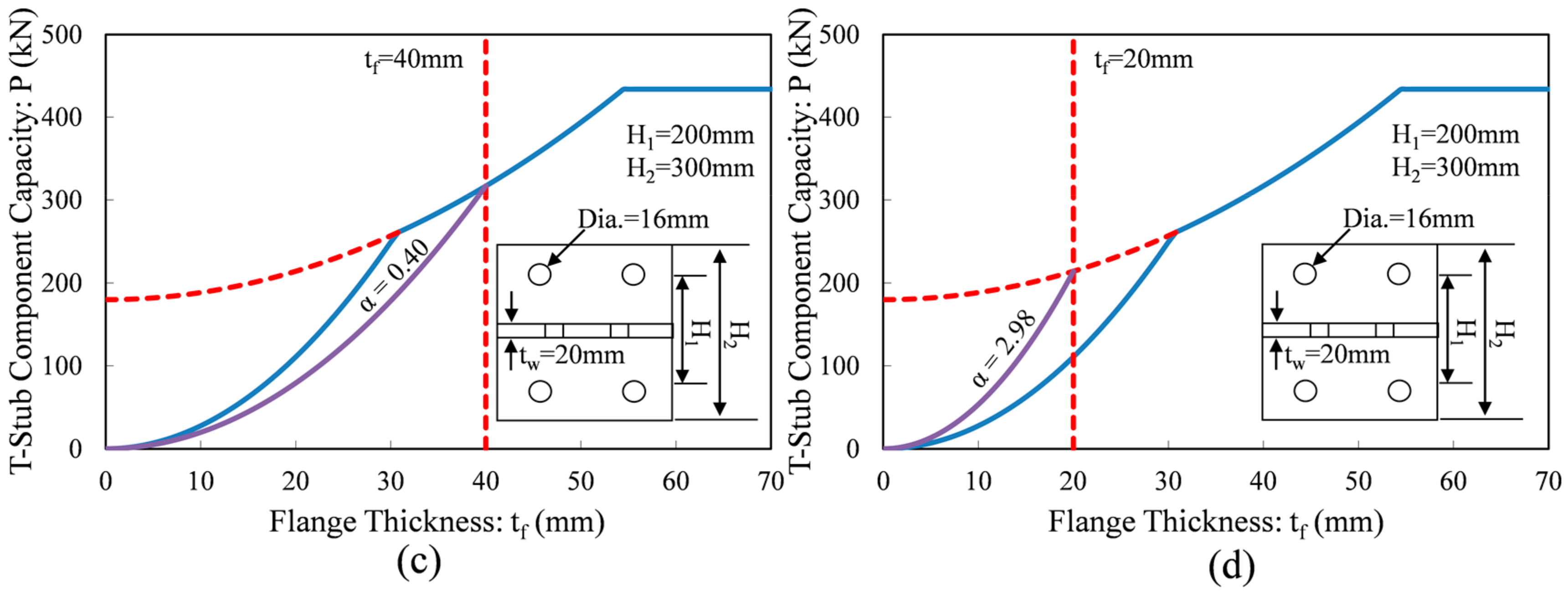


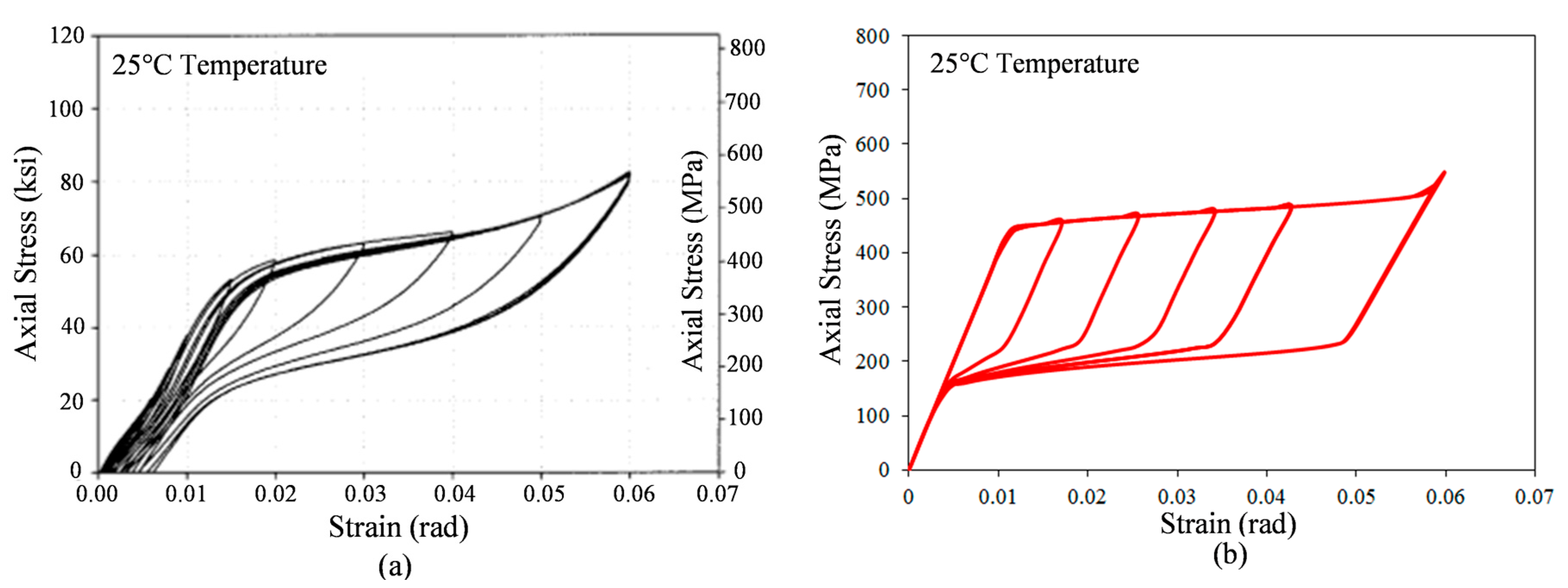

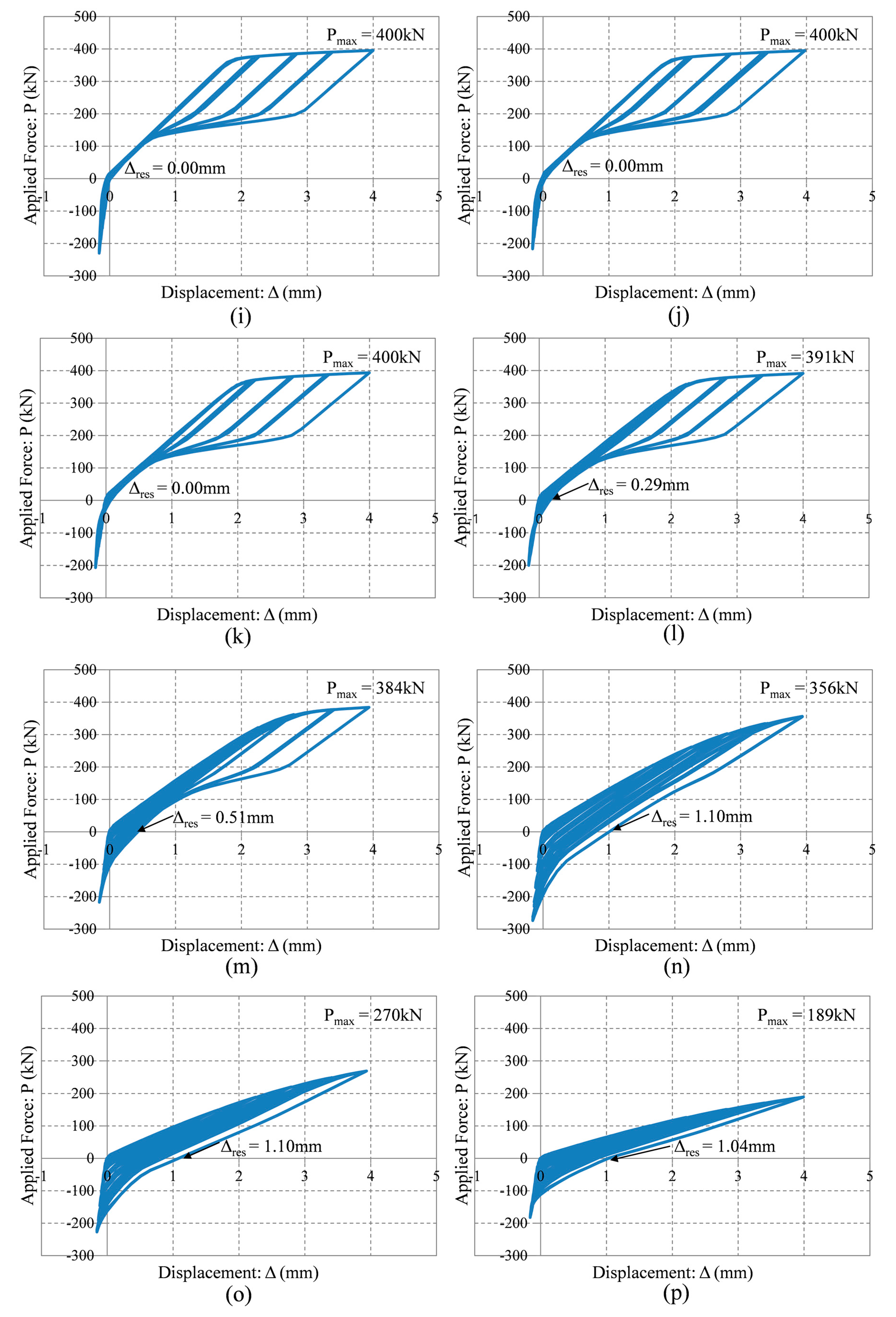
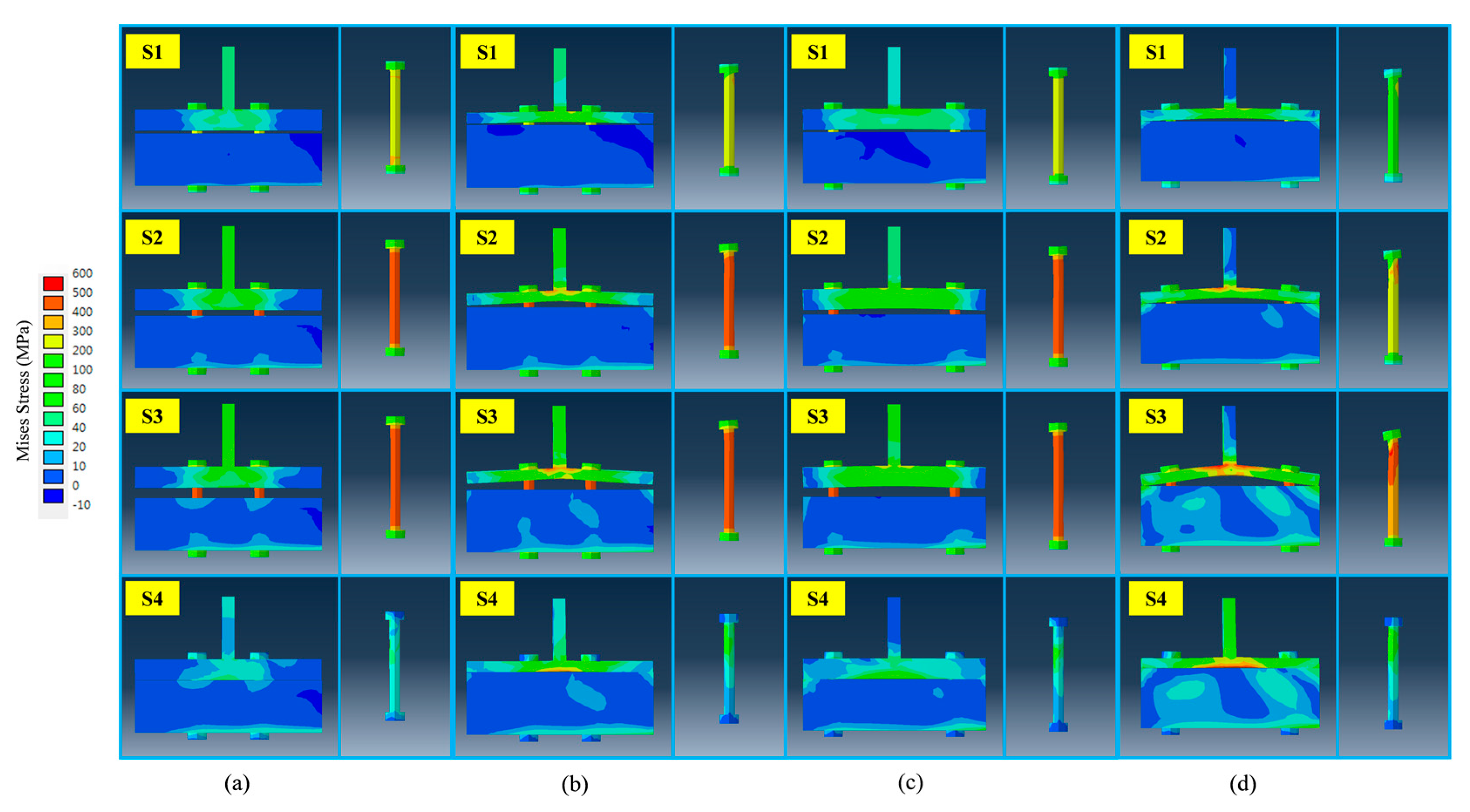
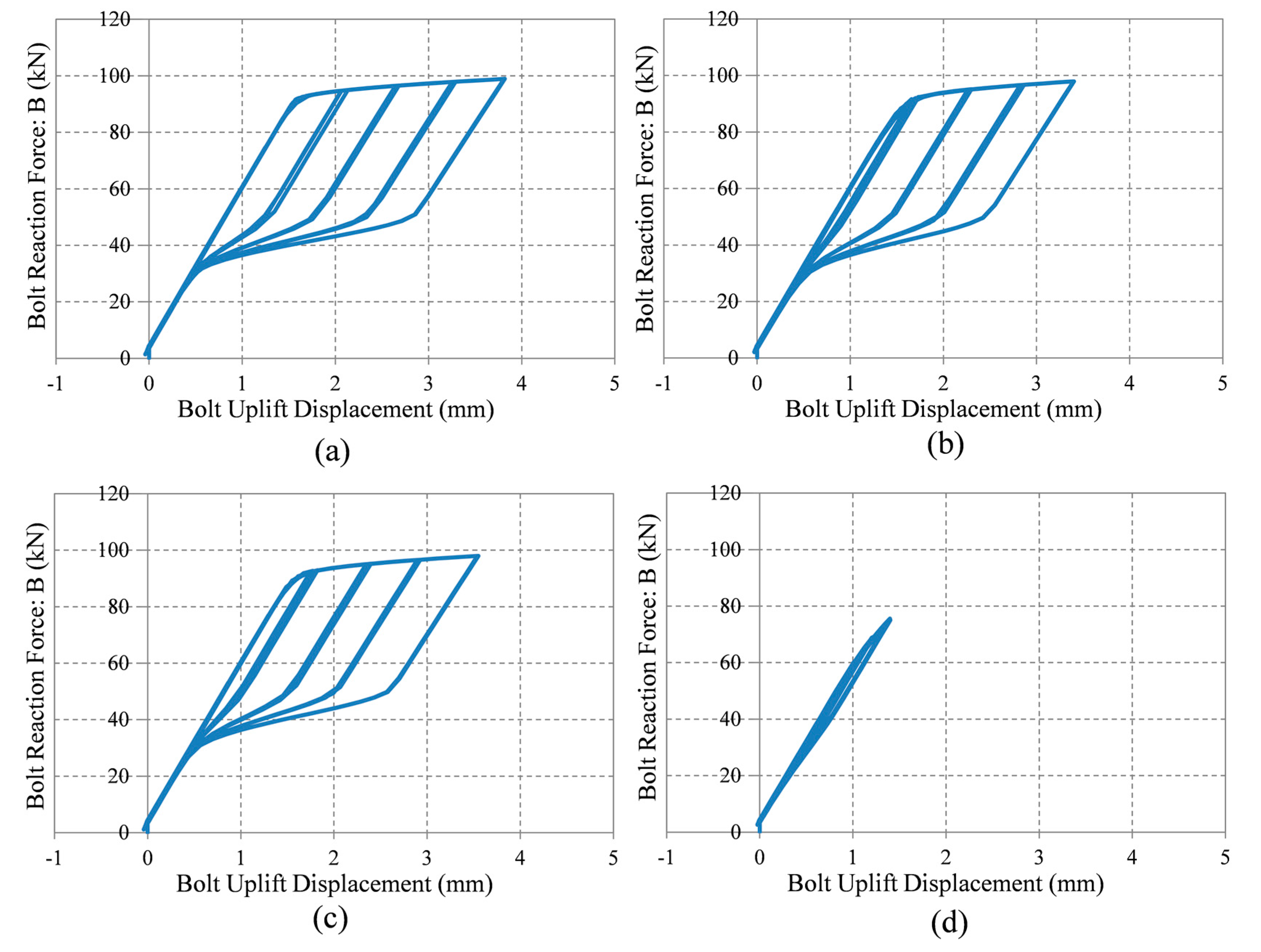

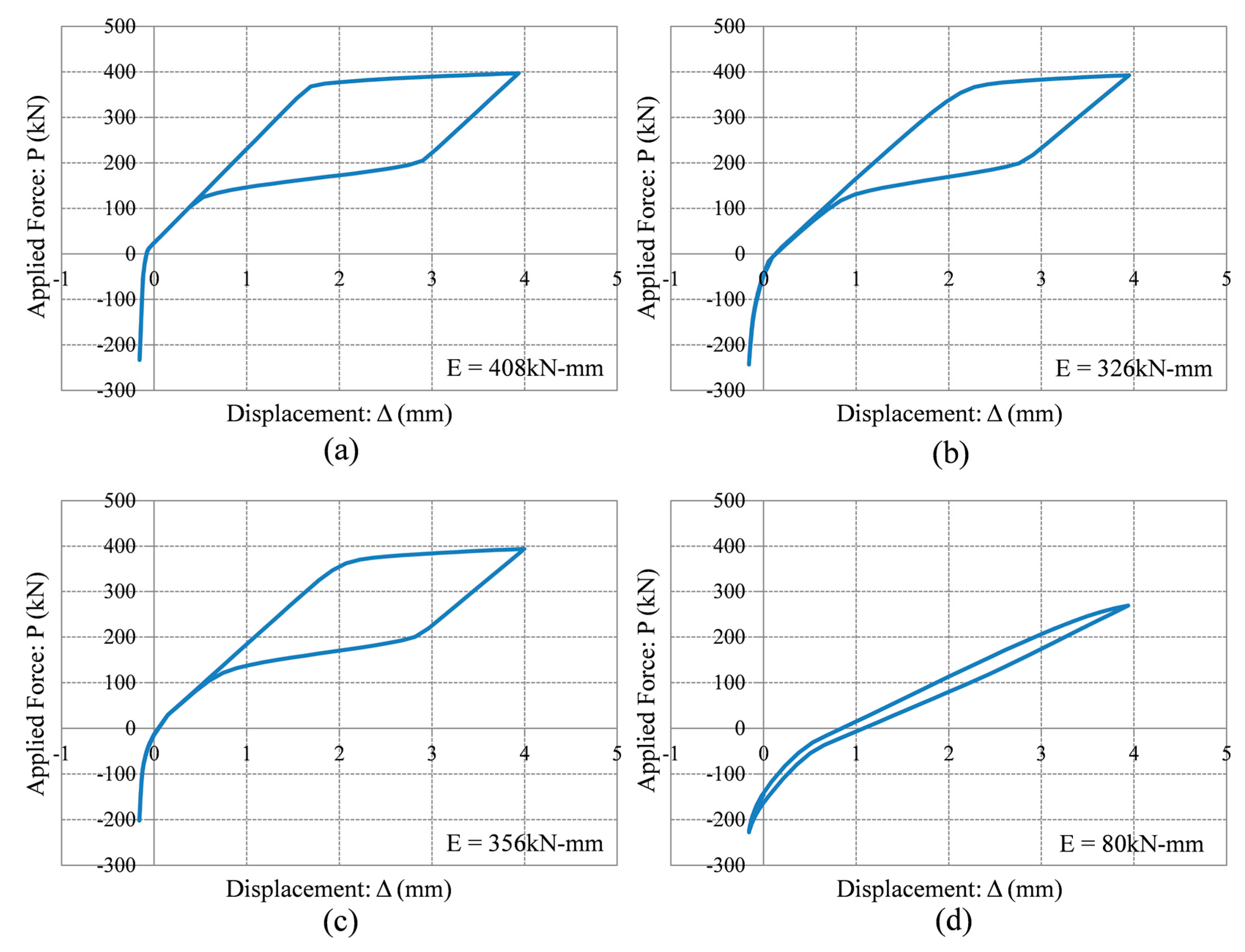
| Model ID | T-Stub Size | Bolt and Column Size | Failure Mode (Capacity) | ||||||||||||||
|---|---|---|---|---|---|---|---|---|---|---|---|---|---|---|---|---|---|
| WT-stub | tf | tw | H1 | H2 | dh | a | a′ | b | b′ | α | Bolt (Diameter × Length) | ΣB | tc | Mode 1 | Mode 2 | Mode 3 | |
| Case-1 | 300 mm | 50 mm | 20 mm | 100 mm | 300 mm | 16 mm | 100 mm | 108 mm | 40 mm | 32 mm | −0.60 | 16 × 140 mm | 430 kN | 90 mm | - | - | 430 kN |
| Case-2 | 300 mm | 45 mm | 20 mm | 100 mm | 300 mm | 16 mm | 100 mm | 108 mm | 40 mm | 32 mm | −0.48 | 16 × 140 mm | 430 kN | 95 mm | - | - | 430 kN |
| Case-3 | 300 mm | 40 mm | 20 mm | 100 mm | 300 mm | 16 mm | 100 mm | 108 mm | 40 mm | 32 mm | −0.31 | 16 × 140 mm | 430 kN | 100 mm | - | - | 430 kN |
| Case-4 | 300 mm | 35 mm | 20 mm | 100 mm | 300 mm | 16 mm | 100 mm | 108 mm | 40 mm | 32 mm | −0.06 | 16 × 140 mm | 430 kN | 105 mm | - | - | 430 kN |
| Case-5 | 300 mm | 30 mm | 20 mm | 100 mm | 300 mm | 16 mm | 100 mm | 108 mm | 40 mm | 32 mm | 0.25 | 16 × 140 mm | 430 kN | 110 mm | - | 412 kN | - |
| Case-6 | 300 mm | 25 mm | 20 mm | 100 mm | 300 mm | 16 mm | 100 mm | 108 mm | 40 mm | 32 mm | 0.74 | 16 × 140 mm | 430 kN | 115 mm | - | 388 kN | - |
| Case-7 | 300 mm | 20 mm | 20 mm | 100 mm | 300 mm | 16 mm | 100 mm | 108 mm | 40 mm | 32 mm | 1.64 | 16 × 140 mm | 430 kN | 120 mm | 284 kN | 369 kN | - |
| Case-8 | 300 mm | 15 mm | 20 mm | 100 mm | 300 mm | 16 mm | 100 mm | 108 mm | 40 mm | 32 mm | 3.58 | 16 × 140 mm | 430 kN | 125 mm | 160 kN | 354 kN | - |
| Case-9 | 300 mm | 50 mm | 20 mm | 200 mm | 300 mm | 16 mm | 50 mm | 58 mm | 90 mm | 82 mm | 0.09 | 16 × 140 mm | 430 kN | 90 mm | - | 394 kN | - |
| Case-10 | 300 mm | 45 mm | 20 mm | 200 mm | 300 mm | 16 mm | 50 mm | 58 mm | 90 mm | 82 mm | 0.22 | 16 × 140 mm | 430 kN | 95 mm | - | 353 kN | - |
| Case-11 | 300 mm | 40 mm | 20 mm | 200 mm | 300 mm | 16 mm | 50 mm | 58 mm | 90 mm | 82 mm | 0.40 | 16 × 140 mm | 430 kN | 100 mm | - | 317 kN | - |
| Case-12 | 300 mm | 35 mm | 20 mm | 200 mm | 300 mm | 16 mm | 50 mm | 58 mm | 90 mm | 82 mm | 0.66 | 16 × 140 mm | 430 kN | 105 mm | - | 285 kN | - |
| Case-13 | 300 mm | 30 mm | 20 mm | 200 mm | 300 mm | 16 mm | 50 mm | 58 mm | 90 mm | 82 mm | 1.06 | 16 × 140 mm | 430 kN | 110 mm | 249 kN | 257 kN | - |
| Case-14 | 300 mm | 25 mm | 20 mm | 200 mm | 300 mm | 16 mm | 50 mm | 58 mm | 90 mm | 82 mm | 1.74 | 16 × 140 mm | 430 kN | 115 mm | 173 kN | 233 kN | - |
| Case-15 | 300 mm | 20 mm | 20 mm | 200 mm | 300 mm | 16 mm | 50 mm | 58 mm | 90 mm | 82 mm | 2.98 | 16 × 140 mm | 430 kN | 120 mm | 111 kN | 215 kN | - |
| Case-16 | 300 mm | 15 mm | 20 mm | 200 mm | 300 mm | 16 mm | 50 mm | 58 mm | 90 mm | 82 mm | 5.65 | 16 × 140 mm | 430 kN | 125 mm | 62 kN | 200 kN | - |
© 2017 by the authors. Licensee MDPI, Basel, Switzerland. This article is an open access article distributed under the terms and conditions of the Creative Commons Attribution (CC BY) license (http://creativecommons.org/licenses/by/4.0/).
Share and Cite
Seo, J.; Hu, J.W.; Kim, K.-H. Analytical Investigation of the Cyclic Behavior of Smart Recentering T-Stub Components with Superelastic SMA Bolts. Metals 2017, 7, 386. https://doi.org/10.3390/met7100386
Seo J, Hu JW, Kim K-H. Analytical Investigation of the Cyclic Behavior of Smart Recentering T-Stub Components with Superelastic SMA Bolts. Metals. 2017; 7(10):386. https://doi.org/10.3390/met7100386
Chicago/Turabian StyleSeo, Junwon, Jong Wan Hu, and Kyoung-Hwan Kim. 2017. "Analytical Investigation of the Cyclic Behavior of Smart Recentering T-Stub Components with Superelastic SMA Bolts" Metals 7, no. 10: 386. https://doi.org/10.3390/met7100386



